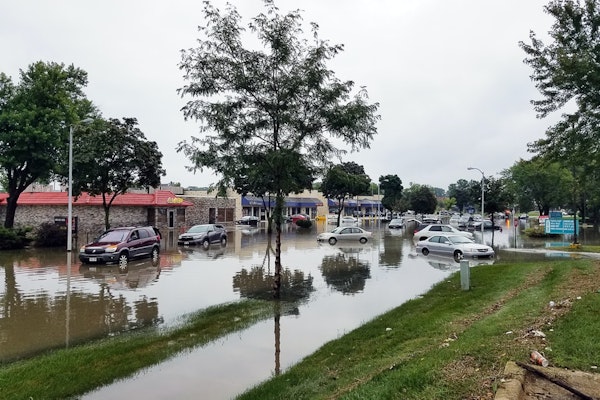
Columbia University Data Breach Impacts 870,000 People With Personal, Academic, and Financial Details Exposed
Columbia University reports a cyberattack compromising personal, academic, and financial data of nearly 870,000 individuals, with investigations and notifications ongoing.
August 11
Education & Training
Insurance Industry
Risk Management
Technology
California
Maine

Fishermen Face Rising Safety Risks as Federal Training Programs Lose Funding
Federal budget cuts threaten safety training programs for fishing, farming, and logging workers—among the nation’s most dangerous jobs—potentially leaving crews at greater risk.
June 2
Catastrophe
Education & Training
Legislation & Regulation
Risk Management
Alaska
Florida
Iowa
Maine
Massachusetts

Storm Surge Risk Threatens Billions in Coastal Property Value Across 20 States
Over 6.4 million homes in coastal U.S. states face moderate or greater storm surge risk, with $2.2 trillion in potential reconstruction costs, according to 2025 Cotality data.
June 2
Catastrophe
Legislation & Regulation
Property
Risk Management
Alabama
Connecticut
Delaware
District Of Columbia
Florida

Weather Balloon Cuts Threaten Forecast Accuracy Amid Severe Season
National Weather Service balloon launch reductions, blamed on Department of Government Efficiency (DOGE) staff cuts, threaten forecast accuracy during severe weather season, raising concerns for claims adjusters.
March 25
Catastrophe
Insurance Industry
Legislation & Regulation
Risk Management
Technology
Colorado
Maine
Nebraska
New York
South Dakota

Maine Stands Out as Home Insurance Rates Hold Steady Amid National Spikes
While home insurance premiums rise across the U.S., Maine has maintained stability, experiencing a rate decrease in 2024. Geography and low disaster risk contribute to its resilience.
February 25
Insurance Industry
Legislation & Regulation
Property
Risk Management
Maine
Massachusetts
New Hampshire
Vermont

Uninsured and Underinsured Drivers on the Rise in 2023, IRC Report Finds
A new Insurance Research Council (IRC) report reveals that over 33% of U.S. drivers in 2023 lacked sufficient auto insurance, marking a significant increase since 2017.
February 21
Auto
Insurance Industry
Legislation & Regulation
Risk Management
Colorado
District Of Columbia
Florida
Georgia
Kentucky

Saint Vincent’s to Pay $29M Over Alleged False Claims Act Violations
Saint Vincent’s Catholic Medical Centers of New York will pay $29 million to settle allegations of False Claims Act violations related to overpayments from the Department of Defense for healthcare services provided to retired military members and their families.
February 17
Fraud
Insurance Industry
Legislation & Regulation
Litigation
Maine
New York

Massachusetts Wildfires Spread as Drought and High Winds Intensify Risks
Ongoing drought and high winds have sparked severe brush fires across Massachusetts, with over 1,500 acres already burned this season. Officials urge caution as red flag warnings remain in place.
November 14, 2024
Catastrophe
Legislation & Regulation
Property
Risk Management
Maine
Massachusetts
New Hampshire

NOAA Proposes $575 Million for Coastal Climate Resilience
NOAA recommends $575 million in funding for 19 projects to enhance coastal climate resilience under the Investing in America agenda.
July 31, 2024
Catastrophe
Legislation & Regulation
Property
Risk Management
Alaska
California
Delaware
Hawaii
Louisiana

Homeowners Face 21% Insurance Premium Increase, Climate Change Cited as Major Factor
Homeowners insurance premiums surged by 21% from May 2022 to May 2023, largely due to severe weather events driven by climate change, leaving many homeowners with limited options.
July 29, 2024
Catastrophe
Insurance Industry
Legislation & Regulation
Property
California
Colorado
Florida
Idaho
Louisiana

Rite Aid Data Breach Impacts 2.2 Million Customers
Rite Aid, the third-largest US drug store chain, revealed that a data breach exposed sensitive information of over 2.2 million customers, including names, addresses, birth dates, and driver’s license numbers.
July 16, 2024
Insurance Industry
Litigation
Risk Management
Technology
Maine
Massachusetts
Oregon
Vermont

New Study Uncovers State Variations in Workers’ Compensation for First Responders’ Mental Health
Recent research from the FIRST Center highlights significant differences in state workers’ compensation laws for first responders with mental health conditions, emphasizing the need for uniform presumption laws.
July 16, 2024
Legislation & Regulation
Life & Health
Risk Management
Workers' Compensation
Alaska
Arizona
California
Colorado
Connecticut

CoreLogic’s 2024 Report Analyzes Hurricane Risk for U.S. Gulf and Atlantic States
CoreLogic’s 2024 Hurricane Risk Report details the potential impact of hurricanes on U.S. Gulf and Atlantic states, emphasizing the need for updated risk assessments to ensure effective preparation and mitigation.
May 30, 2024
Catastrophe
Insurance Industry
Property
Risk Management
Florida
Maine
New Jersey
New York
Pennsylvania

Climate Change Boosts Extreme Weather, Increasing U.S. Flood Risks
Climate change intensifies extreme precipitation, escalating flood risks across the U.S. with significant increases in the Northeast and Midwest.
May 6, 2024
Catastrophe
Property
Risk Management
Alabama
Alaska
Georgia
Hawaii
Kentucky

Homeowners Brace for Further Hikes Amid Climate and Market Pressures
As homeowners grapple with a 19.8% spike in insurance rates, projections show a relentless 6% increase into 2024, heavily influenced by climate change and severe weather patterns.
April 1, 2024
Catastrophe
Legislation & Regulation
Property
Connecticut
Florida
Illinois
Louisiana
Maine





